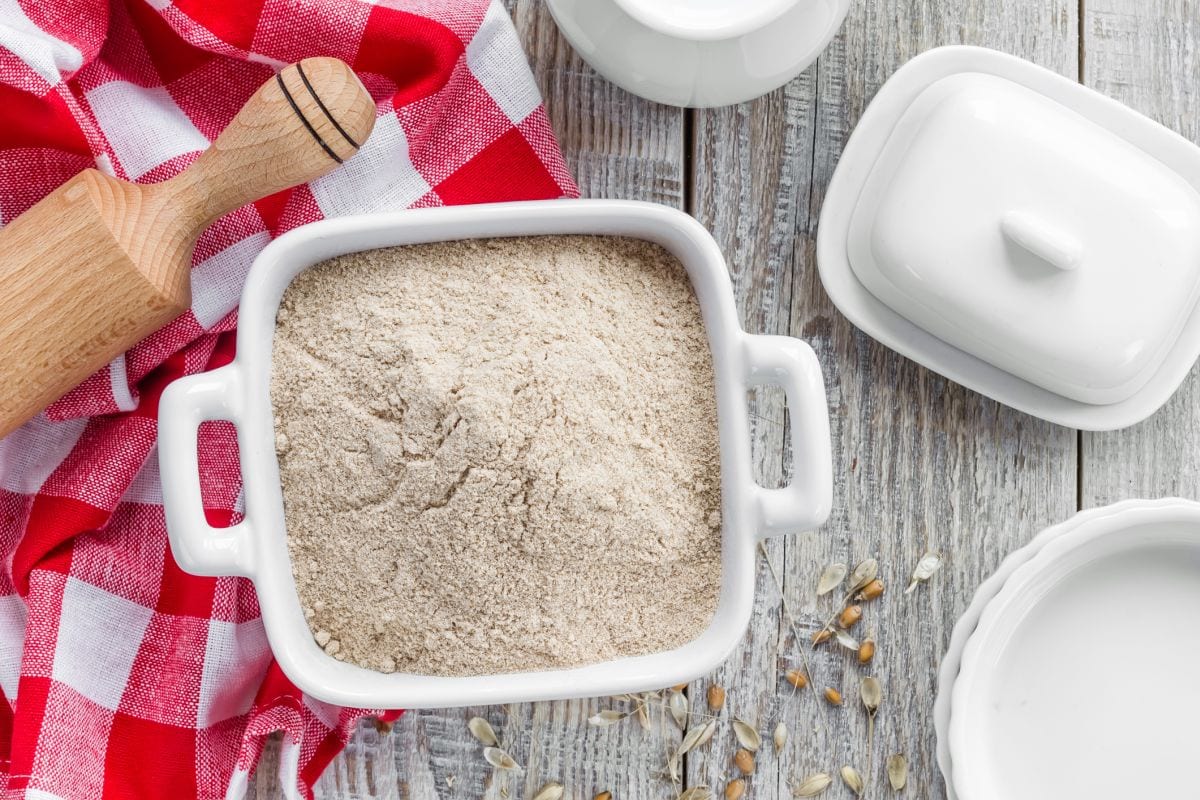Whole wheat flour is a whole grain, nutrient-packed ingredient that you can use in a variety of recipes. It has been used for centuries to make breads, pastas, and other baked goods due to its high fiber content and complex flavor profile. Whole wheat flour provides many health benefits, making it an ideal choice for those looking to take control of their eating habits.

What Is Whole Wheat Flour?
Whole wheat flour is a type of flour made from the entire wheat grain, including the bran, germ, and endosperm. It has a slight coarse texture and a nutty flavor that adds depth to recipes. Whole wheat flour is dark tan or brown in color compared to white flour.
You can use whole wheat flour either alone or combined with other types of flours to create breads, pastas, pizza crusts, and more. You can also use whole wheat flour to make cakes, muffins, and other baked goods.
When substituting whole wheat for white flour in a recipe, add additional liquid or shorten the bake time as whole grains absorb more moisture during baking. Whole wheat flour also makes a good thickening agent for soups, sauces, and gravies.
How Is Whole Wheat Flour Made?
Whole wheat flour is made from the entire wheat kernel, which includes the bran, germ, and endosperm. The process begins with cleaning and conditioning the grain before it is milled into flour. During the milling process, large steel cylinders grind the whole kernels into a powder-like consistency. This powder is then screened to remove coarse particles, resulting in milled flour that still contains some of its natural oils and proteins.
Whole Wheat Flour Nutrition Facts
Whole wheat flour is an excellent source of nutrition and can provide numerous health benefits. Because it is less processed, whole wheat flour provides more dietary fiber, vitamins, and minerals than white flour.
Many people do not get enough fiber in their diets. Fiber has many benefits for the body, such as improving digestion, promoting regularity, and helping to reduce cholesterol. Eating a diet high in fiber can also help keep you fuller longer by slowing down the digestion process. Using more whole wheat flour is one way to get more fiber in your diet.
Whole wheat flour is a good source of B vitamins, folate, iron, magnesium, manganese, selenium, and zinc. B vitamins are essential for maintaining a healthy nervous system. Folate helps the body produce new cells and supports the development of red blood cells. Iron helps transport oxygen throughout the body.
Magnesium plays an important role in managing muscle function and helping the body to produce energy. Manganese is important for maintaining healthy bones and supporting metabolism. Selenium helps protect cells from damage caused by free radicals, and zinc supports a healthy immune system and plays an essential role in wound healing.
Whole Wheat Flour FAQs
Wholemeal flour and whole wheat flour are different terms for the same thing. It is called whole wheat flour in the U.S. and wholemeal flour in the U.K. Both wholemeal flour and whole wheat flour are whole grains.
White whole wheat flour is a type of flour made from white wheat. It has the same nutrition as regular whole wheat flour but has a lighter color and milder flavor. This type of flour is becoming more and more popular in baking due to its versatility and health benefits.
Yes, whole wheat flour is a whole grain. Whole wheat flour is made from grinding the entire wheat kernel, including the bran, germ, and endosperm, into a fine powder. This means that all the essential parts of the grain are left intact, providing high levels of fiber and nutrients.
Whole wheat flour has a longer shelf life than some other flours. It can last up to 6 months when stored in an airtight container at room temperature. If stored in the refrigerator, it can last up to a year. You should store whole wheat flour away from light and moisture as they can cause mold growth.
When storing whole wheat flour, make sure to label the container with the date it was bought so you know how long it has been around. And always check the expiration date on the package before using any type of flour.
Whole Wheat Flour Recipes
- Healthy Whole Wheat Buttermilk Pancakes
- Easy Whole Wheat Pizza Crust
- The Best Whole Wheat Pie Crust
- Whole Wheat Walnut Salted Caramel Apple Galette
Bottom Line
Whole wheat flour is an excellent source of dietary fiber and essential vitamins and minerals. Because it is a whole grain, it provides more nutrients and fiber than white flour. You can use it in a variety of recipes to boost nutrition, flavor, and texture. Adding whole wheat flour to your diet can help you get more fiber and other beneficial nutrients while still enjoying all your favorite foods.


